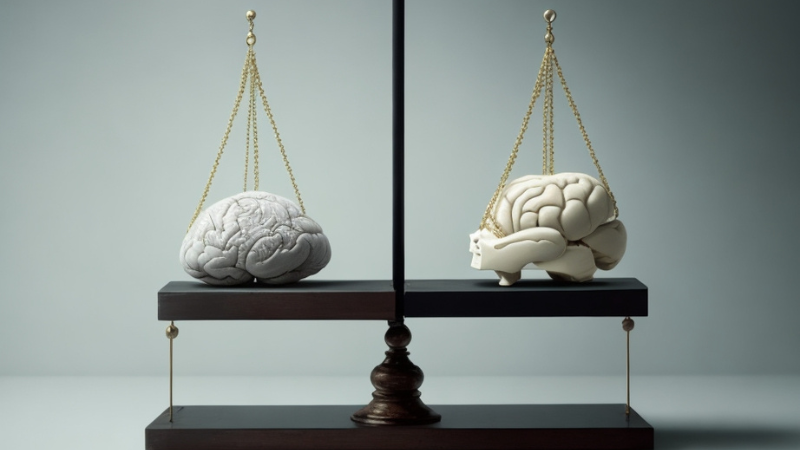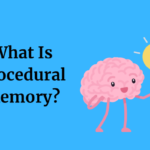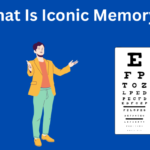Mind-Blowing Showdown: Unveiling the Hidden Battle of Explicit vs Implicit Memory!
Explicit vs Implicit Memory: This article explores the distinction between explicit and implicit memory, two types of long-term memory. Explicit memory involves conscious recollection of facts and events, while implicit memory is unconscious recall of skills and habits. Understanding these memory types enhances cognitive research and therapeutic approaches.

Introduction
Today we will focus on Explicit vs Implicit Memory. In the intricate tapestry of human cognition, memory stands as an invaluable thread, weaving together our experiences, knowledge, and understanding of the world. As a seasoned Mental Health specialist with a focus on memory types, I invite you to embark on a journey of exploration into the realms of explicit and implicit memory – two fundamental pillars that shape the intricate mosaic of our recall processes.
Understanding Memory’s Essence
In the realm of memory, two distinct protagonists emerge – explicit vs implicit memory. Each plays a unique role, akin to the intricate choreography of a well-executed dance, in shaping our ability to remember, learn, and make decisions. The central aim of this article is to delve deep into the nuances of these memory types, shedding light on their characteristics, functions, and interplay.
Explicit Memory Unveiled
At the heart of explicit memory lies conscious intention and deliberate effort. This cognitive powerhouse is responsible for capturing and storing the explicit details of our experiences, from factual information and historical events to the vivid tapestry of our personal narratives. Housed within the folds of the hippocampus and neocortex, explicit memory involves a meticulous encoding process, where the conscious mind takes the reins, imprinting memories with a deliberate purpose.
Implicit Memory Explored
In the shadowy corners of our minds, implicit memory exerts its influence. Operating beneath the surface, this enigmatic force records the subtle patterns, skills, and associations that color our interactions with the world. Anchored in the basal ganglia and cerebellum, implicit memory thrives on repetition and practice, shaping our procedural knowledge and conditioned responses with an automatic finesse.
A Harmonious Symphony or a Clash of Titans
The relationship between explicit and implicit memory is intricate, where harmony and discord often intermingle. In some instances, these memory types collaborate seamlessly, enriching our recall with multifaceted dimensions. Yet, in other scenarios, they may vie for dominance, leading to complexities in memory retrieval and decision-making. Understanding this interplay is crucial in unraveling the mysteries of cognitive function.
Embarking on a Journey of Discovery
As we venture forth into the exploration of explicit vs. implicit memory, we shall unravel the tapestry of their existence. We will decipher how emotional experiences color their interactions, and explore the factors that influence the dominance of one over the other. This article aims to empower you with insights and knowledge, equipping you to harness the unique strengths of each memory type to enhance your cognitive prowess.
Join me as we navigate the intricate landscapes of explicit and implicit memory, peeling back the layers to reveal their essence and impact. As we delve deeper into this captivating realm, you’ll gain a profound understanding of how these memory types shape your recall, enriching your mental landscape and expanding the horizons of your cognitive abilities.
Harness Ancient Wisdom: Elevate focus and memory – try the Himalayan secret for enhanced mental performance.
Understanding Explicit Memory
Explicit memory, often referred to as declarative memory, is a fundamental aspect of human cognition that allows us to consciously recall specific facts, events, and personal experiences. It is the type of memory that you are actively aware of and can deliberately retrieve when needed. Let’s delve into the intricacies of explicit memory and how it shapes our recall processes.
Characteristics of Explicit Memory: Explicit memory involves the conscious effort of encoding, storing, and retrieving information. It enables us to recall details such as names, dates, places, and experiences that we have encountered in the past. This type of memory is highly flexible and can be intentionally manipulated and organized to aid in learning and decision-making.
Brain Regions Involved: The formation and retrieval of explicit memories primarily rely on two key brain regions: the hippocampus and the neocortex. The hippocampus, located deep within the brain’s temporal lobes, plays a crucial role in consolidating new information and linking it to existing knowledge. As experiences become more familiar and frequently recalled, the neocortex takes on a greater role in housing these memories, making them more easily accessible over time.
Encoding Process: Encoding refers to the initial process of converting sensory information into a form that can be stored in memory. Explicit memory encoding involves conscious attention and intention. When you actively pay attention to a lecture, read a book, or engage in a meaningful conversation, you are encoding explicit memories. The more effort and elaboration you invest in understanding and connecting the information, the more likely it is to become a lasting explicit memory.
Real-Life Examples: Explicit memory is at work when you recall historical dates for an exam, remember your childhood birthday parties, or recount the details of a recent vacation. It allows you to retain and retrieve information that is essential for your daily functioning and interactions. For instance, remembering your friend’s favorite restaurant for a dinner reservation or recalling the steps to bake a specific recipe both rely on the power of explicit memory.
In summary, explicit memory serves as a critical tool for navigating the complexities of daily life. It enables us to retain essential knowledge, share experiences with others, and make informed decisions based on past encounters. By understanding the characteristics, brain regions, and encoding processes associated with explicit memory, we can gain valuable insights into how our minds shape and retrieve the information that shapes our world.
Unraveling Implicit Memory

Implicit memory, a silent force that shapes our actions and reactions, operates beneath the surface of our conscious awareness. Unlike explicit memory, which involves deliberate effort and conscious thought, implicit memory works its magic behind the scenes, influencing our behaviors, skills, and perceptions.
Defining Implicit Memory: Implicit memory refers to the type of memory that is formed and expressed without conscious intent or awareness. It encompasses a wide range of non-conscious memory processes that guide our actions, often without us realizing it. This could include skills like riding a bicycle, typing on a keyboard, or even the feeling of familiarity when encountering a certain smell.
The Subtle Workings of Implicit Memory: Implicit memory operates through a network of brain structures, with the basal ganglia and cerebellum playing significant roles. The basal ganglia, located deep within the brain, is responsible for procedural learning and habit formation. It helps us remember how to perform tasks and routines effortlessly, such as tying shoelaces or playing a musical instrument.
The cerebellum, often associated with motor coordination, also contributes to implicit memory by fine-tuning motor skills and movements. This enables us to execute actions without consciously thinking about each step, like walking or driving a car.
Unconscious Encoding: Implicit memory is encoded and retrieved without conscious effort, making it distinct from explicit memory. When we engage in activities repeatedly, the brain consolidates the information and automates the process. As a result, we develop a mental database of skills and associations that become ingrained in our daily lives.
Consider the example of a seasoned pianist. Over years of practice, their implicit memory allows them to effortlessly translate sheet music into finger movements, producing beautiful melodies without consciously analyzing each note.
Practical Instances of Implicit Memory: Implicit memory finds expression in various aspects of our lives. These include:
- Procedural Skills: The ability to ride a bike, type on a keyboard, or tie shoelaces without actively thinking about each step.
- Conditioned Responses: Reacting to certain cues or stimuli based on past experiences, such as salivating when smelling a favorite dish or feeling anxious in specific situations.
- Priming Effects: The subtle influence of prior exposure on subsequent behavior or perceptions, such as being more likely to choose a product due to prior exposure to related advertisements.
Implicit memory underpins many of our daily actions, contributing to the seamless execution of routine tasks and the formation of automatic behaviors.
In summary, implicit memory operates quietly but powerfully in the background, shaping our abilities, habits, and reactions. Its automatic nature and influence on our behaviors make it a fascinating aspect of memory that works hand in hand with explicit memory to create a comprehensive cognitive landscape. Understanding the mechanisms and significance of implicit memory sheds light on the intricate workings of our minds, enriching our comprehension of human cognition.
Explicit vs Implicit Memory: The Interplay and Influence
Explicit and implicit memory systems, though distinct, don’t operate in isolation within the intricate landscape of the human brain. Rather, they engage in a dynamic interplay that significantly shapes our recall processes. Understanding how these memory types interact offers valuable insights into how our minds navigate the vast realm of information and experiences.
1. Complementary Collaboration: Explicit and implicit memory often work hand in hand, complementing each other to facilitate efficient recall. Consider the act of riding a bicycle – while you consciously remember the steps involved (explicit memory), your body automatically performs the coordinated movements (implicit memory). This collaboration allows you to effortlessly perform tasks you’ve learned over time.
2. Conflicting Influence: However, there are instances where explicit and implicit memory can be at odds. For example, a person who has developed a fear of dogs due to a past traumatic event might consciously understand that not all dogs are dangerous (explicit memory), yet still experience anxiety when encountering a dog (implicit memory). In such cases, implicit memory, rooted in emotional responses, can sometimes override explicit memory and influence behavior.
3. Emotions as Mediators: Emotions play a pivotal role in mediating the relationship between explicit and implicit memory. Strong emotional experiences are more likely to be stored in both memory systems. This is why emotionally charged events, whether positive or negative, tend to be more vividly remembered over time. The emotional content can enhance the retrieval of explicit memories while also reinforcing the emotional associations tied to implicit memories.
4. Impact on Decision-Making: The interplay between explicit and implicit memory significantly influences decision-making. Explicit memory provides the conscious information we use to make rational choices, while implicit memory contributes subtle biases and preferences that stem from past experiences. These implicit influences can sometimes guide decisions without our conscious awareness, leading to choices that align with our ingrained beliefs and associations.
5. Cognitive Load and Memory Dominance: The dominance of explicit or implicit memory in a given situation can be influenced by cognitive load – the mental effort required to process information. When cognitive resources are limited, the brain may rely more on well-established implicit memory pathways, as they demand less conscious effort. Conversely, in situations where ample cognitive resources are available, explicit memory may take the lead.
Understanding the intricate interplay between explicit vs implicit memory opens a window into the complexities of human cognition. By recognizing their collaborative nature and potential conflicts, we gain a deeper appreciation for how these memory systems collectively contribute to shaping our perceptions, decisions, and responses to the world around us. In the following section, we will delve into the factors that influence the dominance of either memory type in various contexts.
Explicit vs Implicit Memory: Factors Affecting Dominance
The interplay between explicit and implicit memory is a complex dance, influenced by a variety of factors that determine which memory type takes center stage in different situations. While explicit and implicit memory systems often work in harmony, their dominance can shift based on several crucial variables.
1. Age and Developmental Stage: Age plays a significant role in the balance between explicit and implicit memory. Children and young adults tend to rely more on implicit memory, which aids in acquiring new skills and habits. As individuals mature, explicit memory becomes more dominant, allowing for the recall of factual information and autobiographical experiences. Understanding these developmental shifts can help tailor educational approaches and memory enhancement techniques for different age groups.
2. Learning Context and Attention: The context in which information is learned can influence memory dominance. Explicit memory thrives when focused attention is applied, such as during intentional studying. In contrast, implicit memory operates in the background, absorbing information from the environment without conscious effort. Depending on the level of attention devoted to learning, one memory type may take precedence over the other.
3. Cognitive Load and Stress: High cognitive load and stress levels can impact memory dominance. Under stressful conditions, the brain may prioritize implicit memory, relying on well-practiced routines and responses. This phenomenon, known as the “Yerkes-Dodson law,” suggests that moderate stress can enhance memory performance, but excessive stress can hinder both explicit and implicit memory functions.
4. Trauma and Emotional Significance: Traumatic experiences often leave a profound impact on memory. Highly emotional events tend to be encoded more vividly in explicit memory, leading to more accurate recall of details. However, traumatic events can also trigger implicit memory mechanisms, resulting in involuntary and intrusive memories. The interplay between explicit and implicit memory in traumatic situations can influence the emotional processing and coping strategies of individuals.
5. Memory Priming and Associations: Memory priming, the activation of related concepts or experiences, can influence memory dominance. Priming implicit memory through exposure to related stimuli can enhance the formation of habits and associations. Meanwhile, explicit memory can be primed through deliberate cues or prompts, aiding in the retrieval of specific facts or information.
6. Neuropsychological Factors: Individual differences in brain structure and function can impact memory dominance. Brain injuries or disorders affecting specific regions may shift the balance between explicit and implicit memory. For example, damage to the hippocampus could result in a stronger reliance on implicit memory for certain tasks.
Understanding these factors that affect the dominance of explicit and implicit memory provides valuable insights into how our memory systems adapt to different circumstances. By recognizing the dynamic interplay between these memory types, researchers and educators can develop targeted interventions to enhance learning, optimize memory recall, and promote overall cognitive well-being.
Harnessing Memory Power

In the dynamic interplay between explicit and implicit memory, lies a treasure trove of potential for optimizing your recall abilities. By understanding the distinct qualities of both memory types and strategically leveraging their strengths, you can enhance your overall cognitive function and learning efficiency.
1. Exploiting Explicit Memory:
a. Mnemonic Techniques: These memory aids are invaluable for boosting explicit memory recall. Techniques like acronyms, visualization, and the method of loci allow you to create mental associations that facilitate the retrieval of specific facts, lists, or information.
b. Spaced Repetition: Leveraging the spacing effect, this technique involves revisiting information at increasing intervals over time. It promotes long-term retention by capitalizing on the brain’s ability to consolidate memories through repeated exposure.
c. Mindful Learning: Engaging in focused, deliberate learning with an awareness of the material’s relevance and context can significantly enhance explicit memory. Connecting new information to existing knowledge helps anchor it in your memory network.
2. Nurturing Implicit Memory:
a. Repetitive Practice: Implicit memory thrives on repetition and routine. Consistent practice of skills, such as playing a musical instrument or driving, strengthens neural pathways and enhances your ability to perform tasks automatically.
b. Sensory Associations: Engaging multiple senses while learning or practicing a skill can deepen implicit memory formation. Associating smells, sounds, or textures with certain activities creates a rich tapestry of sensory cues that aid in recall.
c. Practical Application: Applying learned skills in real-world situations reinforces implicit memory. This process of transferring knowledge from a controlled environment to a practical context enhances the automaticity and efficiency of your memory retrieval.
3. Striking the Balance:
As you strive to optimize your memory recall, it’s crucial to strike a harmonious balance between explicit and implicit memory. Consider the following strategies:
a. Integrate Learning Styles: Recognize your preferred learning style—whether visual, auditory, or kinesthetic—and tailor your learning experiences accordingly. Integrating different styles can activate both memory types, enriching your overall cognitive repertoire.
b. Embrace Novelty: Engaging in diverse and novel activities challenges your brain, promoting cross-pollination between memory systems. Novel experiences stimulate implicit memory, while learning new information bolsters explicit memory.
c. Reflect and Review: Regularly revisit learned material to reinforce both explicit and implicit memory pathways. This reflective process encourages connections between new and existing knowledge, facilitating deeper understanding and retention.
In summary, explicit and implicit memory are integral to our cognitive functioning, each offering unique advantages. By strategically employing mnemonic techniques, spaced repetition, sensory associations, and practical application, you can harness the power of both memory types to enhance your recall abilities. Striving for a harmonious balance between explicit and implicit memory will empower you to navigate the intricate landscape of memory with finesse, fostering a sharper mind and enriched learning experiences.
Fostering Harmony Between Explicit vs Implicit Memory
As a seasoned Mental Health specialist with a focus on memory types, I understand the dynamic interplay between explicit and implicit memory systems. While these two memory types may seem distinct, they often collaborate and influence each other in fascinating ways. In this section, we will delve deeper into fostering harmony between explicit and implicit memory to enhance overall cognitive function.
1. Cross-Training the Mind:
- Just as physical exercises target different muscle groups, engaging in a variety of mental activities can stimulate both explicit and implicit memory. Balancing tasks that require conscious learning (explicit) with those that involve intuitive skills (implicit) can create a synergistic effect, strengthening your overall memory prowess.
2. Embracing Multisensory Learning:
- Our senses play a crucial role in memory formation. Engage multiple senses when learning new information, as this can facilitate stronger connections between explicit and implicit memory networks. For example, while studying, incorporate visual aids, listen to related audio, and even involve touch or movement to enhance your memory’s multi-dimensional capacity.
3. Contextual Enrichment:
- Both explicit and implicit memories thrive in rich contextual environments. When trying to remember something explicitly, immerse yourself in the context in which you learned it. For implicit memories, recall the setting where you initially acquired a certain skill. By reinforcing context, you activate associations that benefit both memory types.
4. Emotionally Charged Learning:
- Emotions are powerful catalysts for memory consolidation. Tying emotional significance to explicit memories can strengthen their recall potential. Similarly, emotional experiences are often encoded into implicit memory, influencing future responses. By recognizing and leveraging the emotional aspects of learning, you can harness the full potential of both memory systems.
5. Mindfulness and Reflection:
- Mindfulness practices encourage introspection and self-awareness, fostering a deeper connection between explicit and implicit memory. Regular reflection on your experiences and the knowledge you acquire can create a bridge between the two memory types, leading to a more holistic understanding and retention of information.
6. Continuous Learning and Adaptation:
- Embrace a growth mindset and a thirst for knowledge. By actively seeking new experiences, skills, and information, you challenge both your explicit and implicit memory systems. Adapting to new situations and learning continuously encourages the brain to draw from both memory types, resulting in a flexible and resilient cognitive capacity.
In summary, the explicit and implicit memory systems are not isolated entities but rather integral components of a sophisticated cognitive network. By nurturing a balanced relationship between these memory types, you can unlock the full potential of your memory recall and create a harmonious symphony of learning and retention. Remember, the key lies in recognizing their strengths and leveraging their unique attributes to optimize your cognitive abilities.
Conclusion
Thanks for reading this post on Explicit Memory vs Implicit Memory. What have we learned from it? In the intricate tapestry of human cognition, the dance between explicit and implicit memory is a captivating spectacle. As we journeyed through the realms of conscious recollection and unconscious familiarity, we uncovered the rich nuances that shape our memory landscape.
Explicit memory, with its deliberate encoding and conscious retrieval, anchors our factual knowledge and personal experiences, forming the foundation of our identity and understanding. It allows us to recount stories, recite historical dates, and cherish cherished moments, stitching the fabric of our lives with intention and awareness.
Implicit memory, on the other hand, operates in the shadows, seamlessly weaving its threads into the fabric of our actions and behaviors. It guides us as we navigate through well-practiced routines, respond to cues without conscious effort, and dance through the rhythm of skills acquired through repetition and experience.
Yet, these memory types are not mere strangers passing in the night. They are companions, sometimes harmonizing beautifully and at other times engaging in a delicate tug of war. The interplay between explicit and implicit memory influences how we perceive the world, make decisions, and adapt to change. It is a reminder that our minds are not monolithic, but rather a symphony of interconnected processes.
As we part from this exploration, let us carry forth the knowledge that explicit and implicit memory are not isolated entities but integral threads woven into the tapestry of our cognitive existence. By understanding their roles, embracing their strengths, and fostering their collaboration, we embark on a journey of cognitive empowerment. So, the next time you remember a cherished moment or find yourself effortlessly riding a bike, remember that both explicit and implicit memory are the guiding hands behind the scenes, shaping the masterpiece of our memory recall.
Frequently Asked Questions
FAQ 1: What is the primary difference between explicit and implicit memory?
Explicit memory involves conscious, intentional recollection of facts, events, and experiences. It enables us to recall names, dates, and personal anecdotes. Implicit memory, on the other hand, operates unconsciously, influencing our actions and behaviors based on past experiences and learned skills. While explicit memory requires effortful retrieval, implicit memory guides automatic responses without conscious awareness.
FAQ 2: How do explicit and implicit memories affect our daily lives?
Explicit memory shapes our ability to remember important information, engage in meaningful conversations, and learn new subjects. It’s responsible for recalling academic knowledge, historical events, and personal stories. Implicit memory, meanwhile, influences our procedural skills, habits, and reactions. It’s what allows us to effortlessly tie our shoelaces, ride a bicycle, or respond to familiar social cues.
FAQ 3: Can explicit and implicit memory work together?
Absolutely. Explicit and implicit memory often collaborate in complex ways. For example, explicit memory of a traumatic event can create implicit emotional responses, impacting our behavior and feelings even when we’re not consciously recalling the event. Additionally, explicit knowledge gained through conscious learning can become so ingrained that it transforms into implicit knowledge, such as fluency in a language or playing a musical instrument.
FAQ 4: How can I enhance both explicit and implicit memory?
To boost explicit memory, practice techniques like mnemonic devices, spaced repetition, and deliberate rehearsal to reinforce memorization. Engage in active learning and teach others what you’ve learned. For implicit memory, focus on consistent practice and repetition in skill-based activities. Create associations between actions and their outcomes, and immerse yourself in multisensory experiences to strengthen implicit memory connections. Balancing these strategies can help optimize your overall memory recall abilities.



